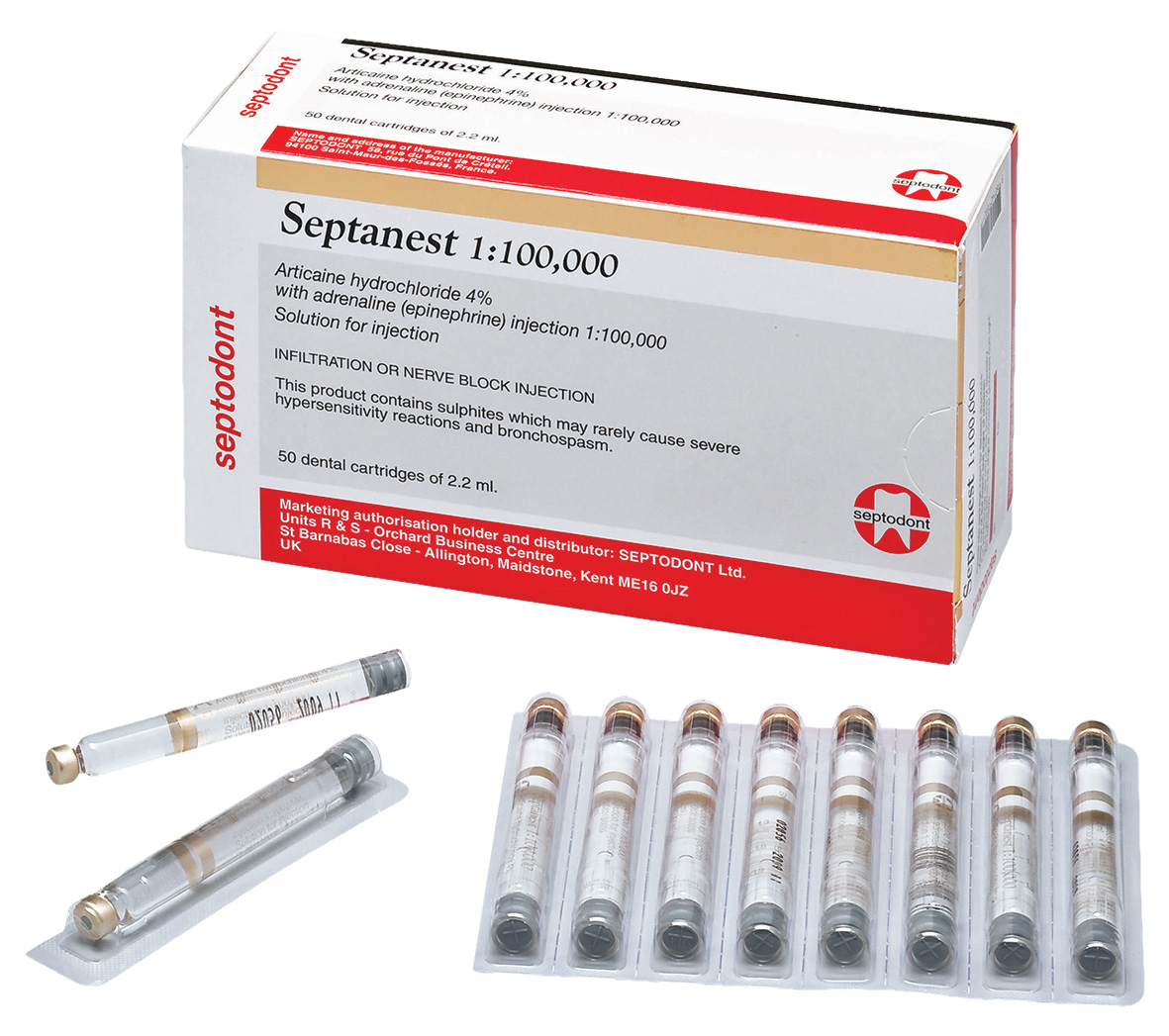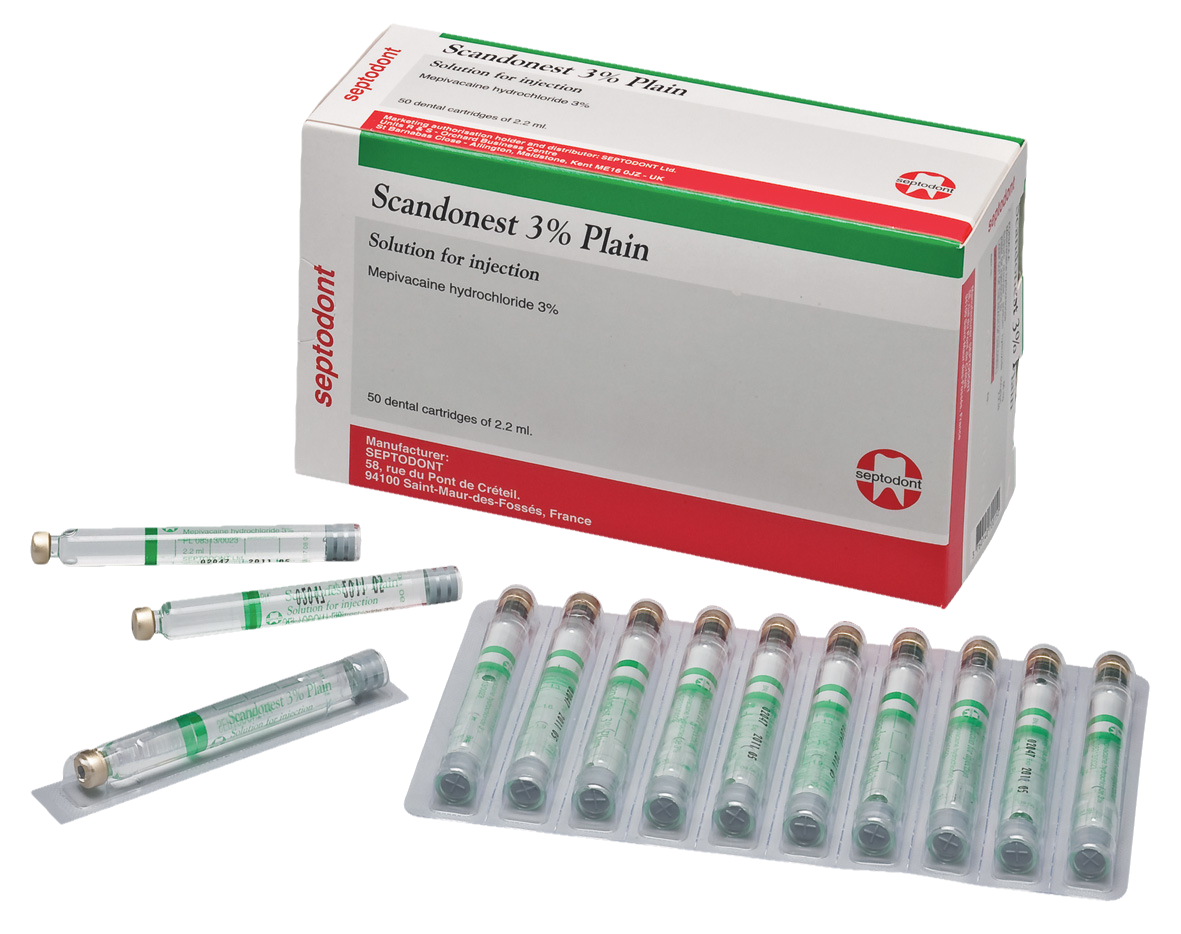Dental Anaesthetics – An Essential Overview
Rundown of our most purchased local anaesthetics and how they work.

Rundown of our most purchased local anaesthetics and how they work.

Dental anaesthetics are a type of medicine used during dental procedures to numb areas of the mouth or induce sleep. At Kent Express, our focus is on local anaesthetics and supplying tried and tested pharmaceuticals to our dentists. Here is a rundown of four of the most widely used local anaesthetics in the UK; Septanest, Xylocaine, Lignospan Special and Scandonest.
Local anaesthesia is the most common dental aesthetic used in surgery. It is where a small area of the mouth is numbed. The patient remains fully conscious during treatment.
Local anaesthetics are the predominant choice for the following dental procedures:
Administration of local anaesthetics is mostly carried out in one of two ways- infiltration injection or block injection. Infiltration injections involve the numbing of a small area of the mouth at the site of the injection. Block injections cover an entire region of the mouth.
As well as by injection, local anaesthesia can be given as an ointment, spray or drops.
Determining what local anaesthetic to administer, dosage and what technique to use depends not only on the type of procedure but on the patient too. Factors that need considering include patient age, weight, medical history, allergies and what medicines they’re currently taking.
Septanest is a local anaesthetic administered via an injection into the mouth of a patient (infiltration or nerve block injection).
Septanest contains articaine hydrochloride (local anaesthetic) and adrenaline (epinephrine) acid tartrate. The adrenaline acts as a vasoconstrictor which helps to prolong the effect of the articaine, keep the anaesthetic where it needs to be and control bleeding.
Septanest 1:100,000 has a higher epinephrine concentration than 1:200,000 formulation to improve blood control.
Septanest is a local anaesthetic administered via an injection into the mouth of a patient (infiltration or nerve block injection).
Septanest contains articaine hydrochloride (local anaesthetic) and adrenaline (epinephrine) acid tartrate. The adrenaline acts as a vasoconstrictor which helps to prolong the effect of the articaine, keep the anaesthetic where it needs to be and control bleeding.
Septanest 1:100,000 has a higher epinephrine concentration than 1:200,000 formulation to improve blood control.


Xylocaine is a local anaesthetic solution given via an injection into the mouth (infiltration or nerve block injection).
Xylocaine is made up of lidocaine hydrochloride (local anaesthetic) and adrenaline (epinephrine) acid tartrate. The adrenaline acts as a vasoconstrictor which helps to prolong the effect of the articaine, keep the anaesthetic where it needs to be and control bleeding.
Xylocaine is also available as a topical pump spray for patients afraid of needles. Effects should start to take effect in 1-5 minutes.
Xylocaine is a local anaesthetic solution given via an injection into the mouth (infiltration or nerve block injection).
Xylocaine is made up of lidocaine hydrochloride (local anaesthetic) and adrenaline (epinephrine) acid tartrate. The adrenaline acts as a vasoconstrictor which helps to prolong the effect of the articaine, keep the anaesthetic where it needs to be and control bleeding.
Xylocaine is also available as a topical pump spray for patients afraid of needles. Effects should start to take effect in 1-5 minutes.
Lignospan Special is a local anaesthetic solution given via an injection into the mouth (infiltration or nerve block injection).
Lignospan Special consists of Lidocaine hydrochloride (local anaesthetic) and adrenaline (epinephrine) acid tartrate. The adrenaline acts as a vasoconstrictor which helps to prolong the effect of the articaine, keep the anaesthetic where it needs to be and control bleeding.
Available in 1.8ml and 2.2ml cartridges.
Lignospan Special is a local anaesthetic solution given via an injection into the mouth (infiltration or nerve block injection).
Lignospan Special consists of Lidocaine hydrochloride (local anaesthetic) and adrenaline (epinephrine) acid tartrate. The adrenaline acts as a vasoconstrictor which helps to prolong the effect of the articaine, keep the anaesthetic where it needs to be and control bleeding.
Available in 1.8ml and 2.2ml cartridges.
Scandonest is a local anaesthetic solution given via an injection into the mouth (infiltration or nerve block).
Scandonest consists of 3% mepivacaine hydrochloride (local anaesthetic) without adrenaline.
Mepivacaine has a shorter duration of action compared to lidocaine and articaine anaesthetics.
Scandonest is a local anaesthetic solution given via an injection into the mouth (infiltration or nerve block).
Scandonest consists of 3% mepivacaine hydrochloride (local anaesthetic) without adrenaline.
Mepivacaine has a shorter duration of action compared to lidocaine and articaine anaesthetics.
